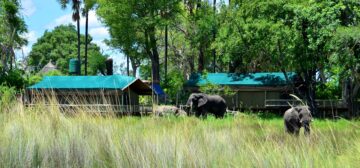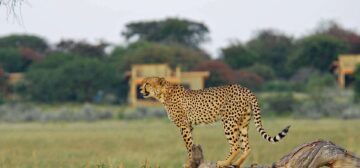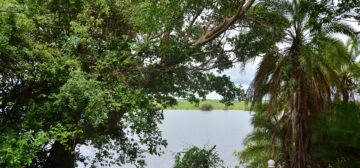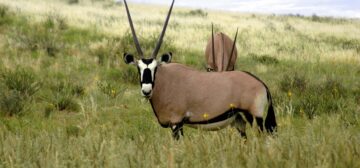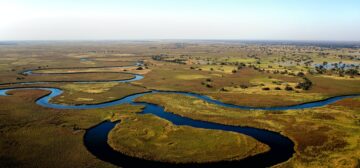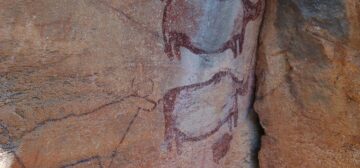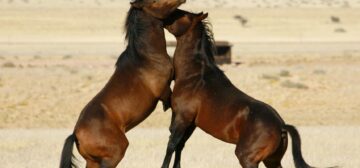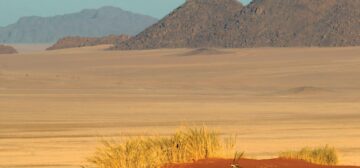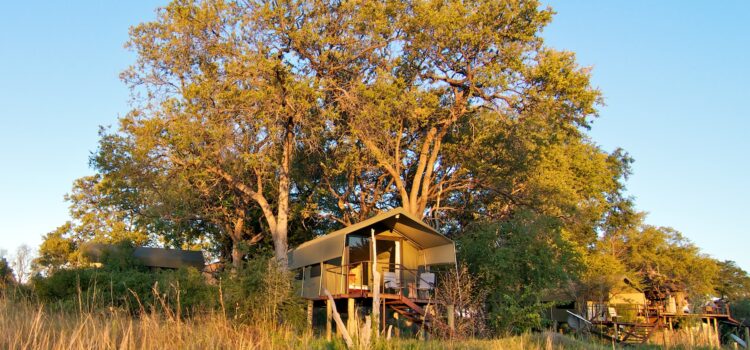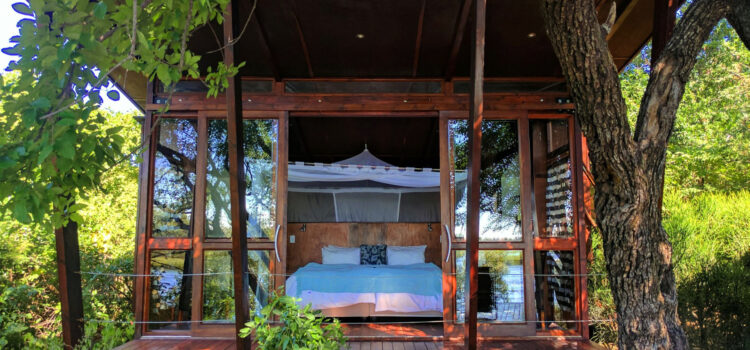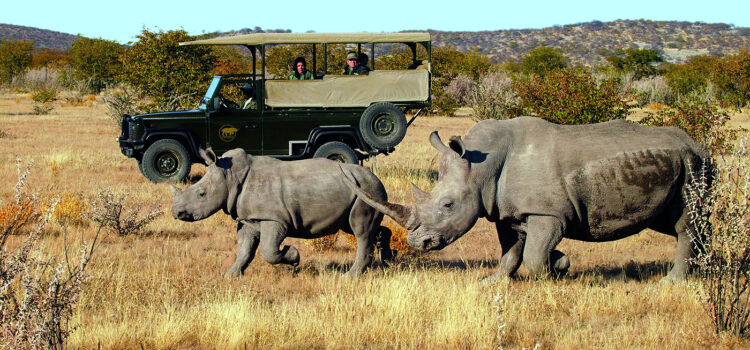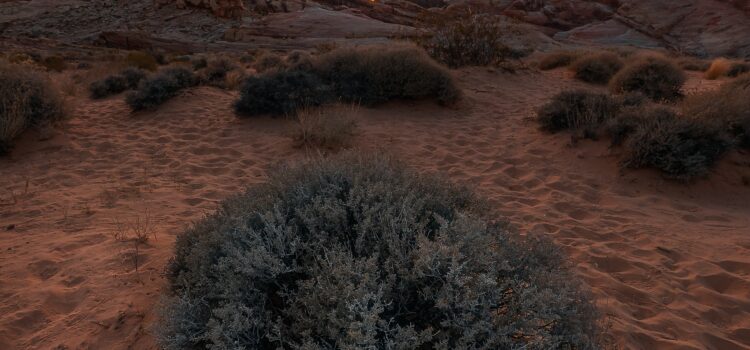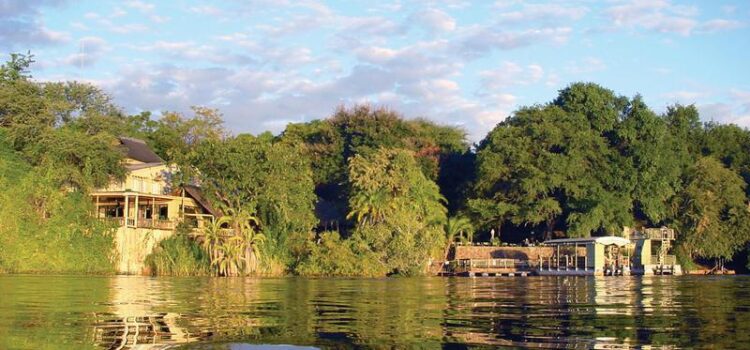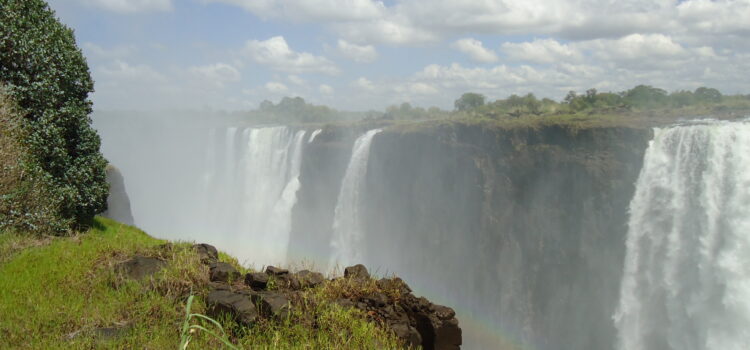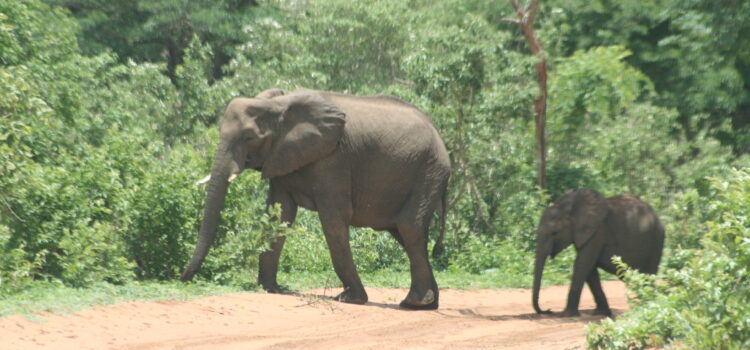Botswana
Botswana is dominated by the unique Okavango Delta and the dry Kalahari Desert thirst land. The landscape ranges from wide, open savanna scrubland and vast saltpans to the beautiful inland waterways of the Delta.
General Information
Much of Botswana is remote and remains accessible to only a small number of visitors, thus making the country an ideal wilderness safari experience. Travel here is very safe and relatively uncomplicated; the infrastructure is excellent with well-maintained main roads, frequently situated fuel stations, and a wide variety of shops. Most guests choose Botswana as it is the ideal destination to experience a remote and authentic wildlife safari.
Botswana is a land-locked country of 581,730 sq km bordered by Zimbabwe, Namibia and South Africa, and at the extreme North Eastern tip by Zambia. The country sits on the Great African Plateau and the landscape is mostly flat or gently undulating at an average altitude of 900m.
Geography – Environment
Botswana’s underlying rock formations are some of the oldest in the world with the granite gneisses in the east being formed around 3500 million years ago. Deposits of copper and nickel are present as well as small amounts of gold, manganese, iron ore and coal. Also present are the extensive diamond reserves on which the country’s wealth is founded.
The climate in Botswana is continental tropical with rainfall across the country averaging at 475mm per annum. Approximately 90% of the country is classed as savanna and the dominant soil type is Kalahari sand.
The Kalahari Desert itself dominates the south and west, although with an average of 250mm rain per annum it is less a true desert and more a savanna grassland. Botswana safaris through the Kalahari can yield extraordinary wildlife sightings and stunning sunsets. The little rain that falls in Botswana arrives in the summer months of October to April, usually as tropical thunderstorms, the cloud generally building in the early afternoon and the rain falling as a steady curtain a few hours later. The importance of water to Botswana and the Okavango Delta is obvious – the local Tswana name of the currency – “Pula” – means rain!
The vegetation across the country varies considerably from acacia dominant savanna in the south and central regions to Mopane, silver leaf and Zimbabwean teak in the north, and marula and baobab on the salt pans. The Okavango Delta offers a stark contrast to the Kalahari Desert with lush green swathes of papyrus and towering palm trees, the perfect place for a tropical safari. There are around 200 desert species in Botswana which have been classified as edible and these include plants such as the Tsamma melon and the wild cucumber which store significant amounts of water within their tissues.
These plants sustain a wide variety of animals in the Kalahari Desert area including springbok, hartebeest, gemsbok, eland, and many smaller species. The plants are also sought by the San Bushmen who still live in small numbers in the Kalahari Desert area. Safaris in Botswana can be organised to areas where the San still live a relatively traditional lifestyle and visitors can learn a little about this ancient way of life.
There are two main river systems feeding Botswana, one is the Okavango and the other the Chobe River. The Okavango River starts life as the Kubango where its headwaters are swollen each rainy season in the highlands of Angola. It then flows south eastwards through the Zambezi Region of Namibia and into Botswana, where it becomes the Okavango and spreads slowly across the delta area creating a unique wilderness of channels, islands, and lagoons in the midst of the dry Kalahari.
The Chobe River also begins life in Angola, as the Kwando River, before flowing into the Zambezi Region and Eastwards across the northern edge of the Chobe National Park to become the Linyanti and then the Chobe before it joins the Zambezi on its way towards Zimbabwe.
History, Culture and Politics
No accurate records exist of the first ever inhabitants of Botswana, although tool fragments and other evidence of human activity have been uncovered which are thought to be around 27,000 years old. The Basarwa, also known as San Bushmen, were among the first recognised people to inhabit the country although only approximately 60,000 remain today.
The 17th Century brought the Tswana, or Batswana, from the South, a Bantu people related to the Sotho of Transvaal and Lesotho. The Tswana now make up over 75% of Botswana’s population and the remaining peoples have been heavily absorbed into this culture. This may be one of the main reasons for Botswana’s cultural and social stability over the last two centuries.
As well as the San, minority tribes include the Mbanderu, cousins of the Namibian Herero tribe who fled Namibia following the German conquest in the 1890’s. The striking traditional costume of these people with large flowing skirts and elaborate headdresses is based on that of the 19th century missionary wives.
The largest minority is the Kalanga tribe, related to the Karanga-Rozwi from Zimbabwe, thought to be the constructors of the Great Zimbabwe ruins. Unlike the Tswana who keep many cattle for commercial use, the Kalanga keep them only for social and religious reasons and live in small farming communities.
The Bayei and the Hambukushu were the original inhabitants of the Okavango Delta. Both tribes moved south in the 18th century to escape Lozi tribal oppression in Zambia. The Bayei were the first to migrate. Traditional fishermen, they are responsible for introducing the wooden mokoro, or canoe, which is still seen in some areas of the Delta today. They fished mainly in the shallow water areas and poled their mokoro. They also hunted in large groups for hippo using spears. The Hambukushu moved south a little later and fished mainly in the deeper waters using paddles to manoeuvre their mokoro. They relied more on the soil for sustenance than the Bayei.
Botswana has never been colonised, but it has been heavily influenced by the surrounding countries and by England whose protection was sought in the 1880’s. The London Missionary Society (LMS) established a presence in Botswana in the 1820’s with Robert Moffat as the main force behind the mission’s work. Moffat was the first person to record a written version of the Tswana language, in the Roman alphabet. The LMS maintained a benign and rather paternal role and the Tswana approached the society for advice in the 1870’s when the South African Boer population threatened to encroach from the South.
The LMS supported Tswana opposition to the Boers and a delegation of chiefs were granted protection by the British crown in 1883. The protectorate was known as Becuanaland. The initial protectorate was extended northwards in 1885, but in the 1890’s Cecil Rhodes began to be interested in gaining control of the area as part of his ambitious British South Africa Society scheme to control the whole of Africa from Cape to Cairo. Chief Khama II led a delegation to London and gained assurance that Becuanaland would receive the continued protection of the British crown. A strip of land to the east of the country, in the Tuli block, was, however, conceded to the BSA Company to work on the Cape to Cairo railway.
Complete independence was sought and gained in 1966 and the first president was Sir Seretse Khama who had studied in England and married an English woman named Ruth. The Botswana Democratic Party (BDP) has been in power since the first democratic elections and continues to draw support from a wide range of Botswana’s population. Mr. Ketumile Masire served as Botswana’s second president, taking over from the late Sir Seretse Khama in July 1980 and continuing a tradition of good governance. He voluntarily retired from office in 1998 and was succeeded by Mr. Festus Mogae. Mr. Mogae finished his second term in 2008 handing over power to the Ian Khama, son of Sir Seretse. In April 2018 Mokgweetsi Eric Keabetswe Masisi was sworn in as the 5th President of Botswana succeeding Ian_Khama.
Today, Botswana’s population numbers around 2.3 million with the majority of the population living in the fertile eastern areas near the borders with Zimbabwe and South Africa. Most people live in central villages surrounded by widely spaced cattle posts which the men tend for the majority of their time. Many younger people are drifting towards the two cities and smaller towns in search of employment. Life expectancy is now 67 for men and 73 for women. Setswana is the countries’ national language while English is the official language.
The capital city is Gaborone in the South with a population of 208,500. Gaborone has a university, the National Assembly chambers, museum, gallery, and international airport. The second city is Francistown near the Zimbabwean border. This is the most industrialised city and was formed around gold prospecting. Industry is now based on textiles, knitwear, plastics, and shoes. Maun is the town at the base of the Okavango Delta and is the starting point for most Botswana safaris.
The name Maun means “place of reeds” and the town has rapidly grown from a one-street frontier settlement to a bustling centre of tourism. Kasane is the other starting point for Delta safaris, and is located in the north, 70km from Victoria Falls. Considerably smaller than Maun it has a modern and busy airport, and being located on the fertile floodplain of the Chobe River Kasane is the one place in Botswana where limited agriculture occurs.
Health and Malaria
Botswana is a malaria area and recommended prophylaxis should be taken. Your doctor can advise you on the best type for the area of travel and your personal requirements. However, taking prophylaxis will not guarantee that you will not contract malaria! The best way to avoid malaria is to avoid being bitten by the mosquitoes that carry the parasite. Only the females of one species of mosquito (Anopheles) carry the tiny parasite, and the greatest incidence of malaria is in areas of high population where there are many people for the mosquito to bite and pass the parasite between. As most of Botswana’s camps and lodges are in areas with very low populations, there are very few incidences of guests contracting malaria.
Mosquitoes usually bite between sunset and sunrise, so make sure that you are covered up during this time! Wear loose-fitting, long-sleeved shirts and trousers, use a good insect repellent and sleep underneath a mosquito net or in a tent/ room sealed with netting. If you do develop flu-like symptoms, or feel at all unwell, during your holiday or after your return home, you must make sure that your doctor knows that you have recently travelled in a malaria area. Malaria is not a serious problem provided people take adequate precautions and seek advice and treatment immediately if they feel unwell.
Botswana’s major private hospitals are of a good standard with clean and safe facilities. However, serious medical cases will be evacuated by air to South Africa where further facilities are available. For this reason, you must make sure that comprehensive travel insurance is taken out before you travel, this insurance should cover any medical expenses, air evacuation and repatriation if necessary. It must also cover delay, curtailment, or cancellation of your holiday or any associated flights.
Water
The water is safe to drink all over Botswana. The channels of the Okavango Delta are lined with stands of papyrus which combines with the underlying, sandy soil to act as a perfect natural filter. The water can be drunk straight from the pristine waterways. Plenty of water must be drunk to prevent dehydration. We recommend 2-3 litres minimum, excluding beverages such as tea, coffee, juice, and alcohol. Dehydration is responsible for the majority of air evacuations from lodges in the Okavango Delta and can cause very serious problems, it is totally avoidable, so don’t let this spoil your holiday!
Climate
- Rainy season: Late November to late March. Rainfall does not usually occur every day, and generally takes place in the afternoon with mornings being fairly clear.
- Summer: October to March with a high of 40° C and a low of 18° C.
- Winter: June to September with a high of 20° C and a low of 0° C.
There is no “best time” to visit Botswana as the different seasons all offer completely different experiences! However, you may like to consider the following when planning your trip:
Season Summer rainy season (October to March)
Pros: Quieter tourism period, fantastic migrating birds, lush green landscape, beautiful sunsets, and stunning views of electrical storms.
Cons: Wildlife is more spread out, very warm temperatures, activities or transport may be interrupted by rain.
Season Winter dry season (June to September)
Pros: Higher chances of excellent game viewing, cooler, few mosquitoes.
Cons: Busiest tourism period, cold mornings and evenings, drier environment.
Our personal preference would be for either March-April or early November as these times are neither too hot nor too cool and the lodges are generally quieter. In March-April the game viewing is usually excellent and in November the migrating bird species are fantastic and the rains have not usually begun.
Photography
Bring plenty of memory cards and a spare camera battery as these items may not be available in some of the more remote areas of Botswana. A good zoom lens (minimum 200 mm) is essential for wildlife photography.
Recommended Packing
Neutral coloured casual clothing (shorts/shirts) for everyday wear, stout shoes (with soles thick enough to protect against thorns and for walking), light waterproof jacket for summer, warm jumper/ fleece for winter, warm long trousers for winter, two sets of good casual clothes for evening dining where appropriate, towel, broad brimmed hat, sunglasses, sunscreen, camera, plenty memory cards & spare battery, binoculars, reliable torch, sleeping bag if camping.
It is also worth noting that if you are travelling by light aircraft or as part of a guided safari, you should carry no more than15kg of luggage in a soft bag for ease of packing.
Currency
The Botswana currency is one of the most stable in Africa. Each “pula” is divided into 100 units, called thebe. US$ can be easily exchanged throughout the country, as can Euro and Pounds. Most accommodation establishments accept credit cards, mainly Visa or Mastercard.
Visa Requirements
Visitors from the UK, European Union and the USA can obtain tourist visas for up to 3 months at the border. Please contact us for details regarding your personal visa requirements.



